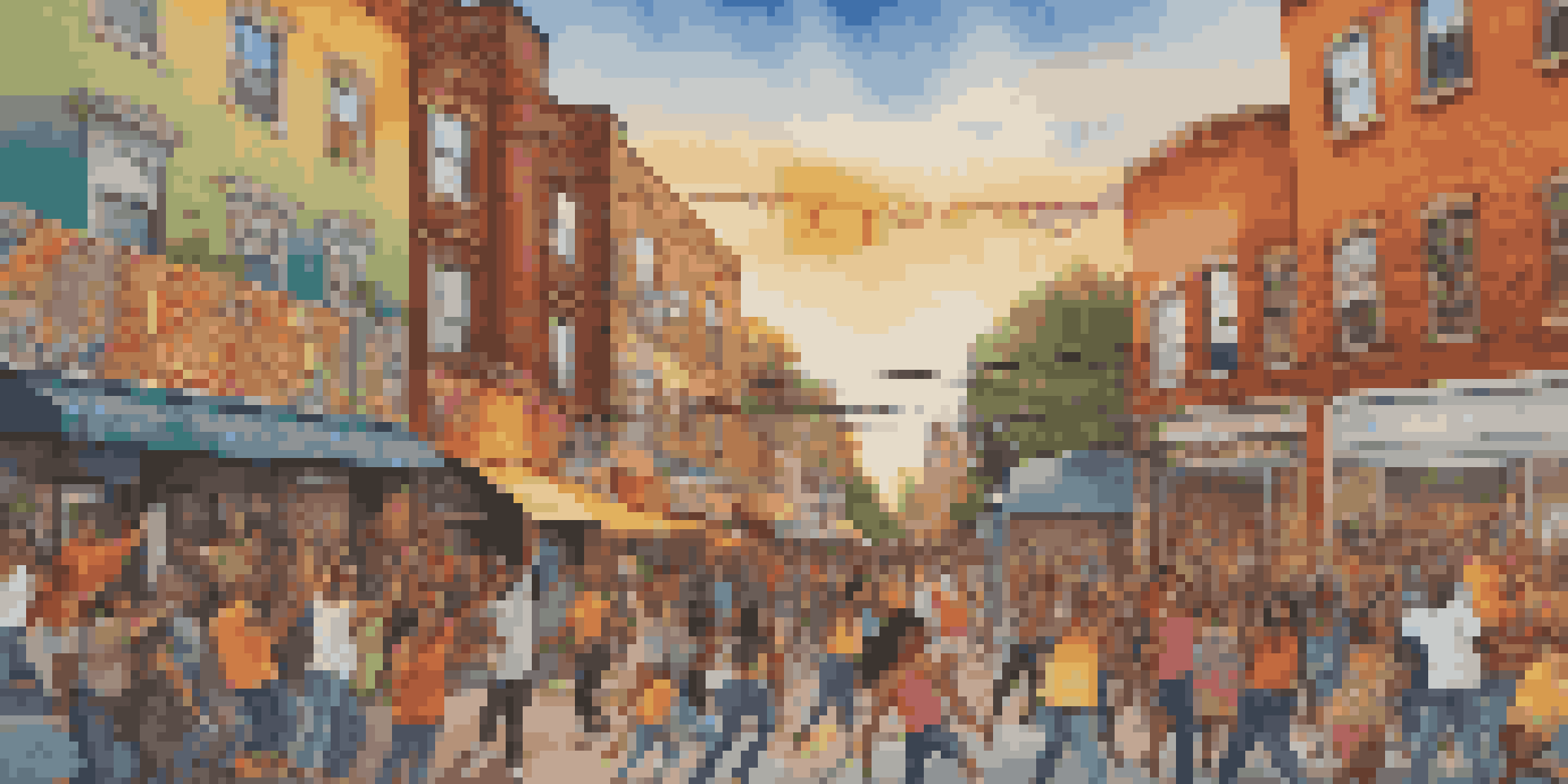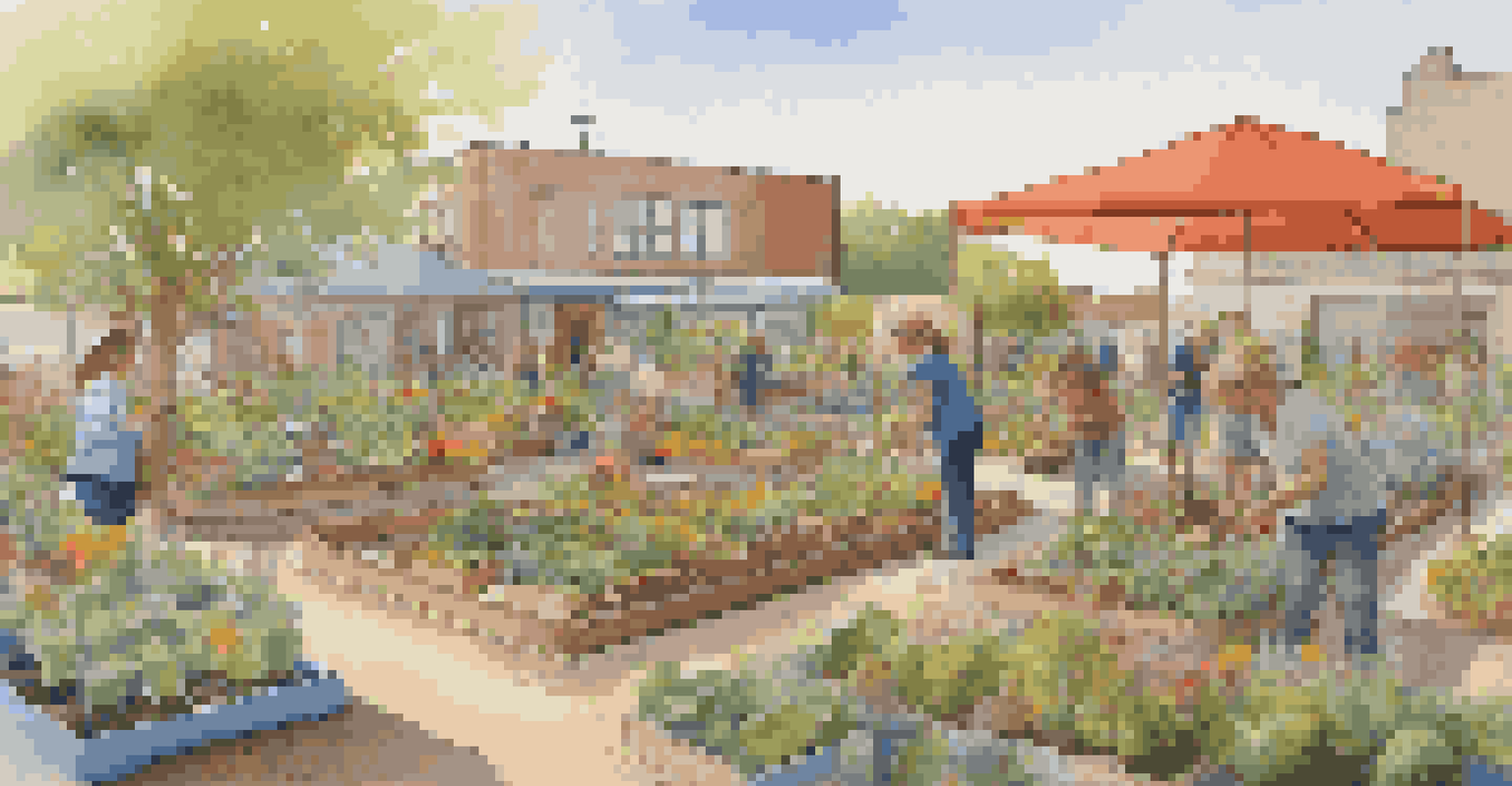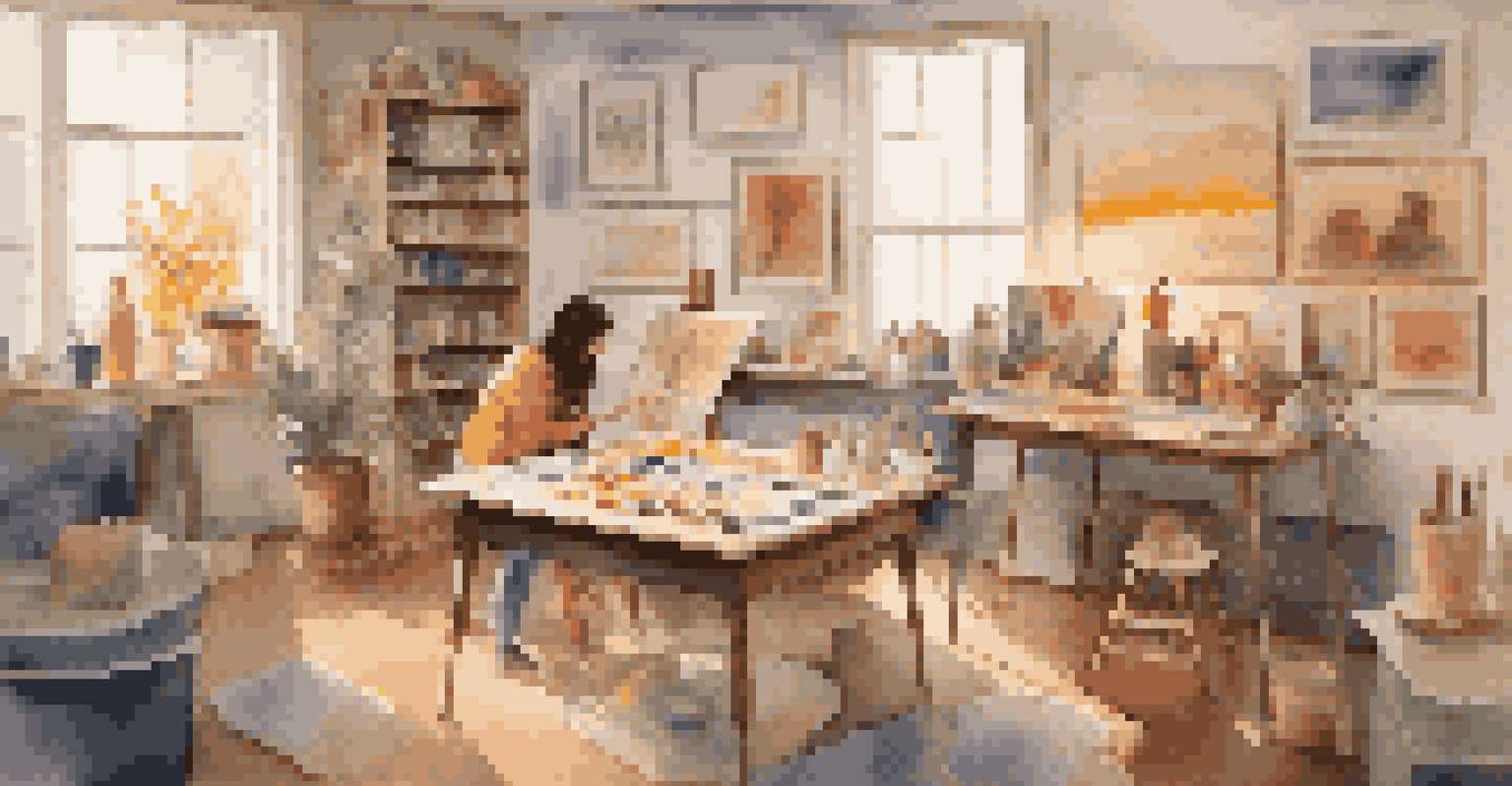The Power of Art in Bridging Cultural Gaps in Communities

Understanding Art as a Universal Language
Art transcends barriers of language and culture, acting as a universal medium through which people can express their emotions and stories. Just as music can evoke feelings without words, visual arts like painting or sculpture communicate complex ideas and sentiments that resonate across various backgrounds. This shared understanding can spark conversations, fostering connections among individuals who may initially feel worlds apart.
Art is the most beautiful of all lies.
Take, for instance, street murals that depict local histories or cultural narratives; they often invite viewers to reflect on their own experiences. When a person encounters a piece of art that speaks to their own life or struggles, it creates an immediate bond, highlighting shared human experiences. This connection can be a powerful starting point for dialogue and cooperation within diverse communities.
Ultimately, viewing and creating art together encourages empathy, as people begin to appreciate the perspectives of others. Engaging with art can break down stereotypes, allowing individuals to see each other not as representatives of separate cultures but as fellow human beings with unique stories to share.
Art as a Tool for Cultural Education
Art serves as a dynamic platform for cultural education, offering insights into the traditions, values, and histories of different communities. Through exhibitions, performances, and workshops, art can provide a deeper understanding of diverse cultural practices, allowing individuals to learn and appreciate the richness of each other’s backgrounds. This educational aspect of art not only enriches individual perspectives but also fosters community pride.

For example, cultural festivals often include art displays, traditional crafts, and performances that celebrate specific heritages. These events create opportunities for people to engage with and learn about cultures that may be different from their own. As attendees participate in these experiences, they cultivate a greater respect and appreciation for the diversity that exists within their communities.
Art Connects Across Cultures
Art transcends language and cultural barriers, fostering empathy and dialogue among diverse communities.
Moreover, this exchange of knowledge through art encourages individuals to question their assumptions and biases. By learning about the historical contexts and significance behind various art forms, people can gain a more nuanced understanding of what it means to belong to a culture, thus breaking down preconceived notions and stereotypes.
Collaborative Art Projects and Community Building
Collaborative art projects are powerful catalysts for community building, bringing together individuals from various backgrounds to create something meaningful. These initiatives can range from community murals to theater productions, where diverse participants contribute their ideas and skills. By working together, participants not only produce art but also foster relationships that strengthen community ties.
Every artist dips his brush in his own soul, and paints his own nature into his pictures.
For instance, a community garden that incorporates artistic elements allows residents to collaborate on both gardening and creative expression. Such partnerships help build trust and understanding among neighbors, making it easier to address shared challenges. These shared artistic experiences can create a sense of belonging, inviting everyone to feel like they have a stake in the community’s future.
In addition, these collaborative projects often result in art that reflects the community's unique identity. By incorporating diverse viewpoints and backgrounds into a single creation, the final piece becomes a symbol of unity, showcasing the beauty of diversity while reinforcing the bonds formed through the collaborative process.
Art and the Healing of Cultural Wounds
Art can play a crucial role in healing cultural wounds, providing a safe space for individuals to express pain, trauma, and hope. For communities that have faced conflict or discrimination, creative outlets allow for cathartic expression and reflection. Through art, people can process their experiences and begin to understand their collective narratives, paving the way for healing.
For example, in communities affected by violence or loss, art therapy programs can help individuals express their feelings in constructive ways. Participants may create visual art, write poetry, or perform, allowing them to confront their emotions and share their stories with others. This process not only aids in personal healing but also fosters a sense of solidarity among participants.
Art as Cultural Education
Art serves as a dynamic platform for cultural education, enriching understanding and appreciation of diverse traditions.
Moreover, public art installations that commemorate historical events or injustices can raise awareness and promote dialogue about difficult topics. By confronting the past through artistic expression, communities can work towards reconciliation and understanding, ultimately creating a more inclusive environment.
Art as a Means of Advocacy and Social Change
Art has long been a powerful tool for advocacy, shining a spotlight on social issues and inspiring change. Artists often use their platforms to raise awareness about cultural disparities, injustices, or environmental concerns, provoking thought and encouraging action. This ability to mobilize people around important causes makes art a vital component in the fight for social justice.
For instance, movements like street art and performance activism engage the public in conversations about inequality and human rights. When art is used to challenge the status quo, it can galvanize communities to come together and demand change. This collective action not only raises awareness but also builds solidarity among those fighting for a common cause.
Moreover, art can be a means for underrepresented voices to share their stories and experiences, amplifying perspectives that might otherwise be overlooked. As communities rally around art that speaks to their struggles, they can foster a sense of empowerment and agency, ultimately driving positive change within society.
Exploring Cultural Identity Through Artistic Expression
Art enables individuals to explore and express their cultural identities in profound ways. By creating or engaging with art that reflects their heritage, people can affirm their identities and share their unique cultural narratives with others. This exploration of cultural identity not only fosters personal growth but also enriches the community by adding layers of diversity.
For example, dance forms, music styles, and visual arts often draw on cultural traditions, allowing artists to preserve and celebrate their heritage. As these art forms are shared with broader audiences, they invite others to experience and appreciate different cultural practices. This exchange can spark curiosity and inspire individuals to learn more about their own roots and those of others.
Art Drives Social Change
Art acts as a powerful tool for advocacy, raising awareness about social issues and inspiring collective action for change.
Furthermore, art can serve as a bridge for intergenerational dialogue, encouraging older generations to share their cultural stories and traditions with younger ones. This transmission of knowledge helps to keep cultural legacies alive while fostering pride and connection among community members of all ages.
The Future of Art in Cultural Exchange
As we look to the future, the role of art in bridging cultural gaps will only become more significant. With the rise of digital platforms, artists can share their work with global audiences, creating opportunities for cross-cultural dialogue and collaboration. This interconnectedness opens doors for new artistic expressions that reflect diverse influences, further enriching the cultural landscape.
Moreover, as communities continue to grapple with issues of diversity and inclusion, art will serve as a vital tool for promoting understanding and empathy. By fostering creative spaces where individuals can come together to share their stories, art can help pave the way for more inclusive and harmonious communities.

Ultimately, the power of art lies in its ability to connect us as human beings, reminding us of our shared experiences and aspirations. By embracing the potential of art as a vehicle for cultural exchange, we can build bridges that unite rather than divide, creating a brighter future for all.